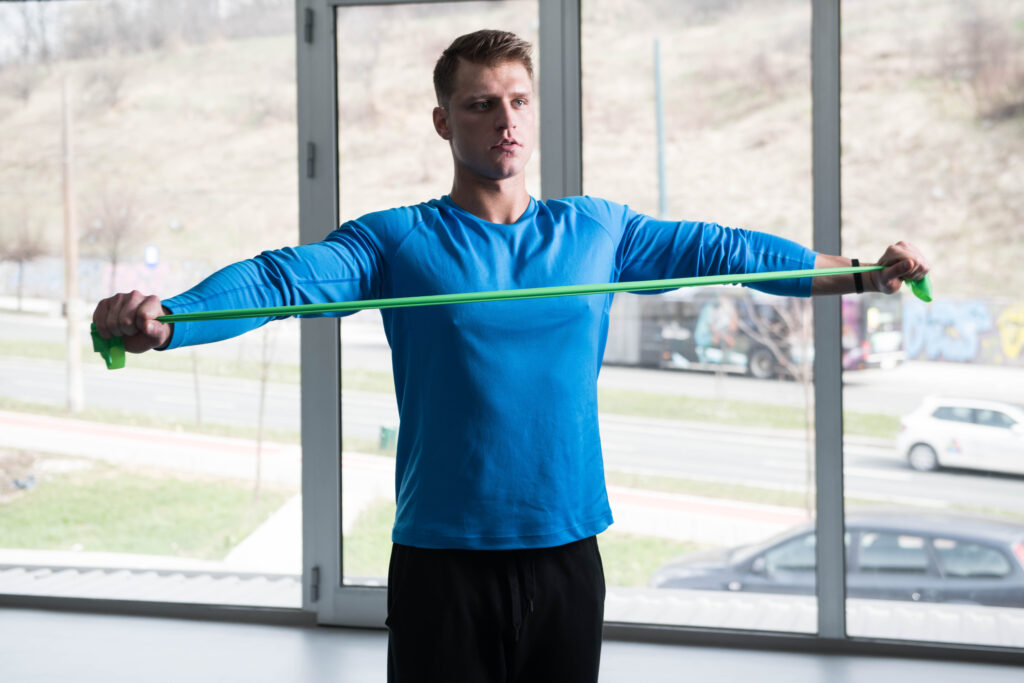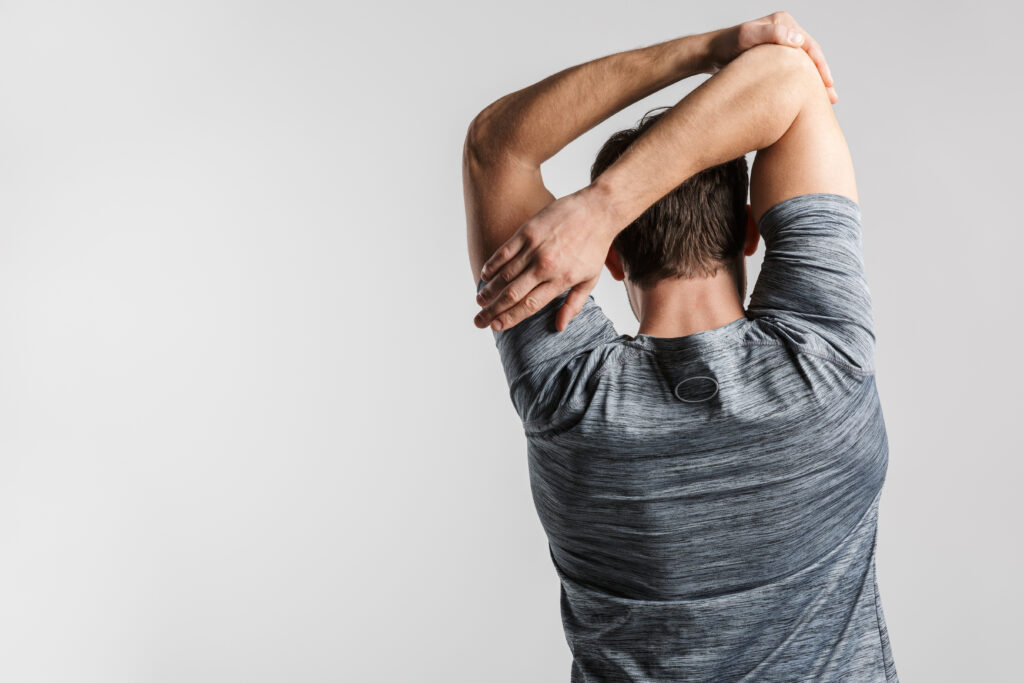Introduction
Shoulder pain or discomfort can hinder everyday activities and workout routines. Strength training and improving mobility can alleviate pain, enhance stability, and prevent future injuries. This article provides an evidence-based plan to build shoulder strength while increasing mobility, tailored to those recovering from shoulder issues.
Importance of Strength and Mobility for Shoulder Health
The shoulder joint is a highly mobile and complex joint, making it susceptible to injury and instability. Strength training focuses on reinforcing the rotator cuff muscles and surrounding stabilizers, while mobility exercises ensure the joint moves freely through its range of motion. Combining both approaches promotes better recovery and long-term functionality.
A Balanced Strength and Mobility Plan
Phase 1: Activation and Mobility
Start with gentle exercises to activate muscles and improve mobility without adding strain.
- Shoulder Pendulum Swings
- Purpose: Relieves stiffness and promotes joint lubrication.
- How-To: Lean forward, support yourself on a surface, and let your arm swing freely in small circular motions.
- Wall Angels
- Purpose: Improves shoulder and scapular mobility.
- How-To: Stand against a wall, move your arms in a controlled “snow angel” motion.
- Sleeper Stretch
- Purpose: Targets internal rotation.
- How-To: Lie on your side, press your forearm toward the ground with the opposite hand.

Phase 2: Strengthening Stabilizers
Once mobility improves, introduce strength exercises focused on the rotator cuff and scapular muscles.
- External Rotations with Resistance Bands
- Purpose: Strengthens the infraspinatus and teres minor.
- How-To: Attach a band to a fixed surface, keep your elbow close to your body, and rotate your arm outward.
- Scapular Retractions
- Purpose: Strengthens scapular stabilizers.
- How-To: Use a resistance band, squeeze your shoulder blades together, and release slowly.
- Modified Push-Ups
- Purpose: Builds chest and shoulder strength without excessive load.
- How-To: Perform on your knees or an elevated surface to reduce stress on the shoulders.
Phase 3: Progressive Loading
Introduce compound movements and heavier resistance once stability and mobility are achieved.
- Dumbbell Shoulder Press (Neutral Grip)
- Purpose: Builds deltoid strength while reducing impingement risk.
- How-To: Hold dumbbells with palms facing each other and press overhead.
- Landmine Press
- Purpose: Encourages a natural pressing motion.
- How-To: Secure a barbell in a landmine attachment, push upward in an arc.
- Face Pulls with Bands or Cable Machine
- Purpose: Strengthens the posterior deltoids and improves posture.
- How-To: Pull the band or cable toward your face with elbows high and wide.
Additional Mobility Exercises
- PVC Pipe Shoulder Dislocates
- Purpose: Improves overhead range of motion.
- How-To: Use a PVC pipe or wooden dowel and move it from the front of your waist to behind your back in a smooth, controlled arc.
- Doorway Stretch
- Purpose: Opens up the chest and anterior shoulder.
- How-To: Place your arms on a doorway and gently lean forward.
Safety Tips for Shoulder Strength and Mobility Training
- Start Light: Use minimal resistance and progress gradually.
- Focus on Form: Proper technique reduces strain and maximizes effectiveness.
- Warm-Up: Engage in 5–10 minutes of light aerobic activity to prepare the joints.
- Listen to Your Body: Avoid exercises that exacerbate pain.
Scientific References
- Escamilla RF, Yamashiro K, Paulos L, Andrews JR. (2009). Shoulder muscle activity and function in common shoulder rehabilitation exercises.
- Synopsis: Explores muscle activation during common rehabilitation exercises, emphasizing their effectiveness in rotator cuff strengthening and scapular stability.
- Lewis JS, Wright C, Green A. (2005). Subacromial impingement syndrome: the effect of changing posture on shoulder range of movement.
- Synopsis: Highlights the relationship between posture and shoulder mobility, supporting the use of exercises like face pulls for improved posture.
- McQuade KJ, Borstad J, de Oliveira AS. (2016). Critical and theoretical perspective on scapular stabilization exercises.
- Synopsis: Evaluates the role of scapular stabilizers in shoulder health and suggests the inclusion of exercises like scapular retractions in rehabilitation programs.
- Reinold MM, Escamilla R, Wilk KE. (2009). Current concepts in the scientific and clinical rationale behind exercises for glenohumeral and scapulothoracic musculature.
- Synopsis: Provides guidelines for the optimal selection of strengthening and mobility exercises for the shoulder joint.
Conclusion
Balancing shoulder strength and mobility is essential for overcoming pain and preventing future injuries. Following a structured, progressive plan tailored to your needs will ensure long-term shoulder health.
Stay Strong Together
If you’re serious about nutrition, building muscle and reaching your fitness goals in 2025, then the Jefit app is the perfect tool to help get you there. With over 20 million downloads and more than 12 million bodybuilders using the app to track their workouts, Jefit is the ultimate strength training companion. Rated as the 2024 Best App and featured by top publications like Men’s Health, PC Magazine, and USA TODAY. Jefit boasts 42,000+ five-star ratings for its user-friendly design and comprehensive features. Whether you’re focused on protein intake, building strength, or tracking your progress, Jefit has everything you need to succeed. Download Jefit today and join millions of fitness enthusiasts transforming their bodies!
- Four Popular Jefit Chest Exercises Backed by Science - April 16, 2025
- 4 Must-Have Exercises Backed by Science for a Full-Body Workout - April 14, 2025
- Best Warm-Up for Strength Training, Backed by Science - April 11, 2025
